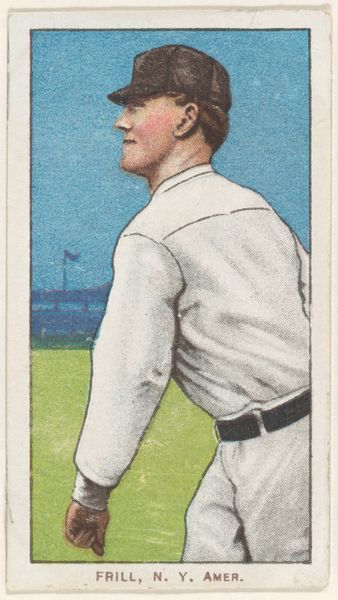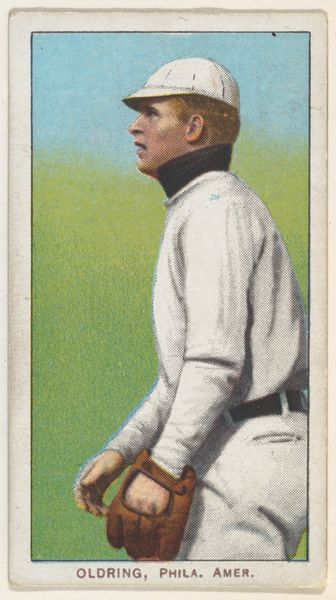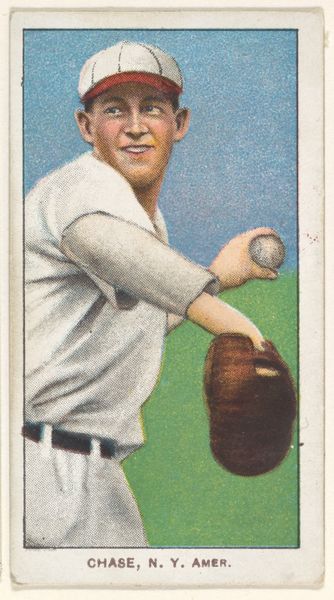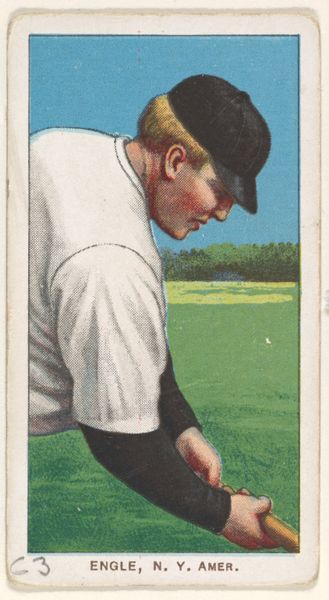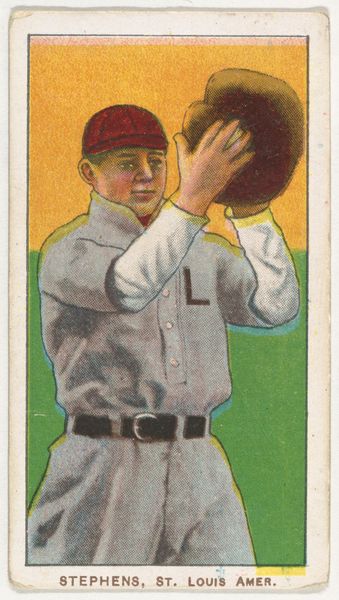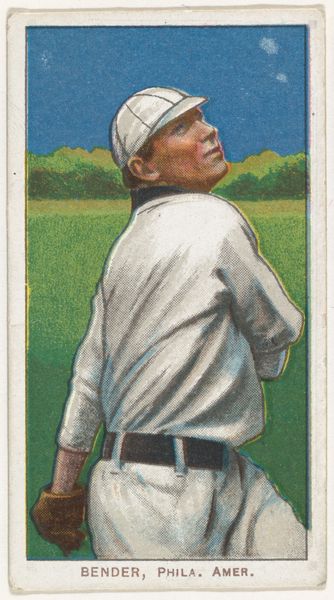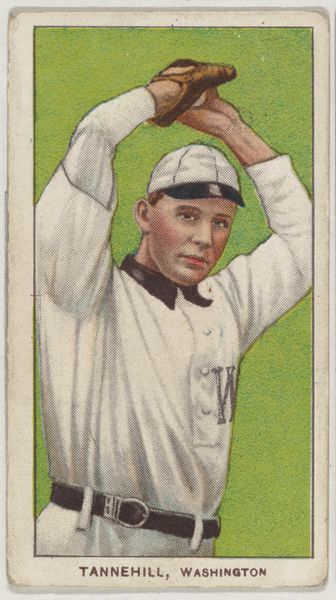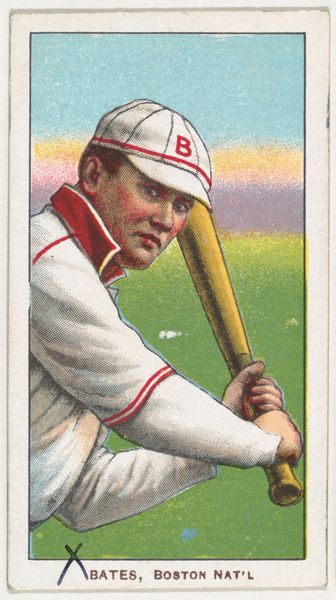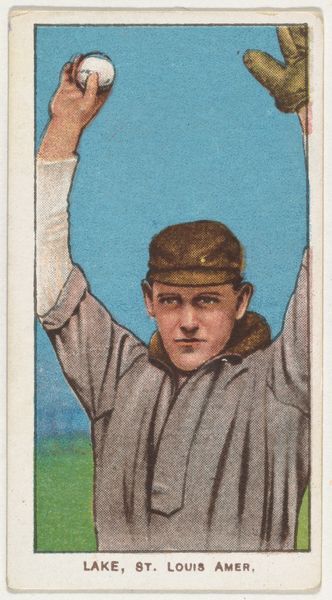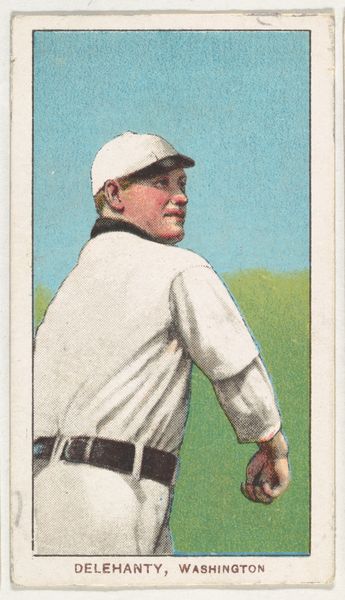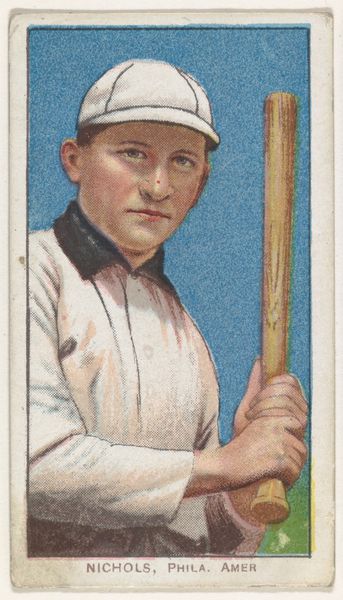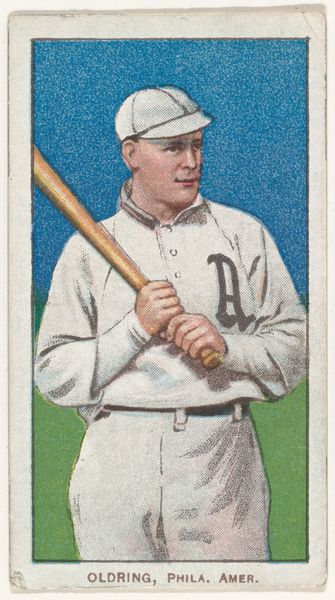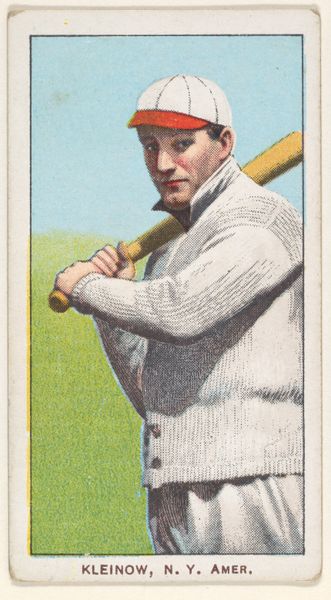
Chase, New York, American League, from the White Border series (T206) for the American Tobacco Company 1909 - 1911
0:00
0:00
drawing, print
#
portrait
#
drawing
# print
#
caricature
#
baseball
#
portrait drawing
#
genre-painting
#
athlete
Dimensions: Sheet: 2 5/8 x 1 7/16 in. (6.7 x 3.7 cm)
Copyright: Public Domain
Curator: Oh, this piece has such an innocent, all-American feel to it. This is a baseball card from the American Tobacco Company’s T206 series, dating back to around 1909-1911. It features Hal Chase, a player for the New York American League team. I always find it striking how art pops up in everyday commercial contexts. Editor: It’s deceptively idyllic, isn’t it? At first glance, it’s just a portrait, but I see this as a layered narrative about American identity at the turn of the century, commodification, and perhaps even the romanticization of sport. Curator: Absolutely! The artist's rendering is almost painterly, but then reproduced en masse as cheap ephemera! Editor: Yes, that tension between the individual and the mass-produced is key. Think about what's being sold here—not just tobacco, but an image, an ideal of athletic prowess and idealized masculinity that helped solidify baseball's cultural dominance, a cultural phenomenon shaped by white, patriarchal norms. The depiction itself feels almost staged, doesn’t it? Curator: Oh definitely. He’s clutching this bizarre, oversized, ornamental water pitcher for some reason. It's so strange. You see that kind of thing a lot back then: a need to project "elegance," however forced or superficial. It's this almost childlike fantasy. But the portraiture is good, capturing the young player’s, almost boyish, look. I am sure this was hand drawn as I am getting those vibes looking at the portrait's linework! Editor: That supposed elegance can easily be viewed as superficial, mirroring the exploitative business practices of companies like American Tobacco. It profited from marginalized labor and aggressive market tactics. So this idealized portrait, existing to boost profits, must be held accountable. Curator: It's interesting to look back at these small windows onto the past and realize nothing is truly innocent; it's like catching glimpses of ourselves in distorted mirrors. Everything is so deeply tangled in its time. Editor: Indeed. Seeing it this way opens up discussions about capitalism, representation, and the power dynamics inherent in image-making that remain ever so pertinent. Curator: Precisely. These aren’t just old baseball cards, they are tiny history lessons that need a critical unboxing to fully be appreciated!
Comments
No comments
Be the first to comment and join the conversation on the ultimate creative platform.
